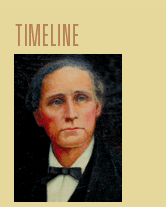
 |
 |
Atlanta
Medical College, the earliest forerunner of Emory University
School of Medicine, wasfounded by the Georgia General
Assembly, John G. Westmoreland,
the first dean, pioneered research in yellow fever.
He also helped found the Atlanta Medical & Surgical
Journal and Atlanta’s first medical society,
the latter to establish a local medical code of ethics.
Atlanta Medical College charged $105 tuition for its
first four-month session plus matriculation, dissecting,and
diploma fees. This school would split and merge twice
during its first six decades before affiliating with
Emory in 1915. |
 |
| |
|
|
 |
| |
Atlanda
Medical College was represented for the first time at
a meeting of the American Medical Association, held
in Nashville. |
|
| |
|
|
 |
| |
After
the Civil War began on April 12, the college suspended
lectures on July 3. The last faculty meeting was on
August 6, with the minutes stopping in mid-sentence.
The minutes picked up again four years later, on August
16, after the war was over. The college’s building
had been damaged by shellfire during the war, and its
furnishings and equipment were destroyed. |
|
| |
|
|
 |
| |
The
city council donated $5,000 in city bonds to repair
and refurnish the college’s building. A disagreement
among faculty as to how this money would be used was
a contributing factor leading to the creation of a rival
school in 1878. |
|
| |
|
|
 |
| |
Jesse
Boring, a former trustee of Emory College, became dean
of Atlanta Medical College. The next year, faculty asked
trustees to give the city council space on the school’s
lot to build a hospital. No hospital was forthcoming
yet, but the city did sand the sidewalks leading to
the schools building. |
|
| |
|
|
 |
| |
D.C.
O’Keefe became dean but died a few months later.
The school’s first dean, John Westmoreland, became
dean pro tem, serving till 1874. |
|
| |
|
|
 |
| |
V.H.
Taliaferro became dean. |
|
| |
|
|
 |
| |
J.T.
Johnson became dean, introducing special clinics for
eye and ear work, diseases of women, and veneral diseases,
in addition to the regular medical and surgical clinics. |
|
| |
|
|

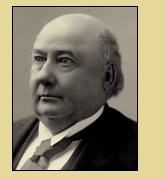 |
| |
A
former member of the faculty of Atlanta Medical College,
Thomas Powell, founded a
rival school, the Southern Medical College. |
|
| |
|
|
 |
| |
Atlanta
Medical College extended the length of its term from
16 weeks to 20 weeks. |
|
| |
|
|

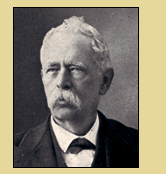 |
| |
H.V.M.
Miller
became dean. The school graduated 48 students in March,
the largest class since the Civil War. |
|
| |
|
|
 |
| |
John
Westmoreland retired after having served as dean twice
and also as treasurer and professor of materia medica
and therapeutics.
Grady Memorial Hospital
(right) opened to serve indigent patients on a site
chosen for its proximity to Atlanta Medical College.
Also in 1892, Southern Medical
College erected a building next door to its rival,
Atlanta Medical College. These two schools merged under
a new name in 1898. |
|
| |
|
|
 |
| |
Atlanta
Medical College installed a telephone in its building.
The system of each professor issuing a ticket
for admission to his course was abolished. Degree
requirements changed from two courses of lectures to
three courses of six months each. |
|
| |
|
|

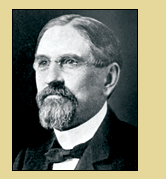 |
| |
W.S.
Kendrick
became dean, after having served as proctor and secretary
since 1887. The school had flourished under his administrative
leadership. He reported in 1892 that enrollment and
revenues had risen to 171 and $16,500, respectively,
compared with 117 and $7,000 in 1887. |
|
| |
|
|
 |
| |
W.S.
Kendrick from Atlanta Medical College and W.S. Elkin
from Southern Medical College agreed to consolidate
their schools, forming Atlanta College of Physicians
and Surgeons, with Kendrick as dean. |
|
| |
|
|

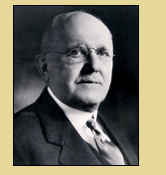 |
| |
W.S.
Kendrick relied heavily on his proctor for administrative
duties and left when faculty relieved the incumbent
proctor of his duties. Kendrick left to form Atlanta
School of Medicine, which existed till 1913, and W.S.
Elkin became dean of Atlanta College of Physicians
and Surgeons. |
|
| |
|
|
 |
| |
The
original building of the Atlanta Medical College (which
now called itself Atlanta College of Physicians and
Surgeons) was razed and a new building erected on the
same site. After this building too was razed years later,
Emory’s new clinical training and faculty building
was erected on this same corner. |
|
| |
|
|

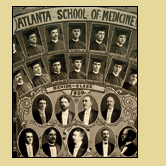 |
| |
Rivalry
between Atlanta Medical College and Atlanta
School of Medicine was fierce, with the latter
publicizing enhanced teaching methods, including use
of drawings to teach anatomy and emphasis on bedside
learning.
This same year, a young Robert
W. Woodruff attended Emory College but left before
his first term was completed. He would later become
Emory’s most generous benefactor.
|
|
| |
|
|

 |
| |
Enrollment
at Atlanta College of Physicians
and Surgeons originally had declined when the
competing Atlanta School of Medicine was created, but
the 1909-1910 session,with a student body of 334, surpassed
any previous one.
Meanwhile this same year, Abraham Flexner, commissioned
by the Carnegie Foundation, published a scathing critique
of medical schools across the country,recommending that
proprietary medical schools either align themselves
with a university or get out of the business of teaching
medicine. |
|
| |
|
|

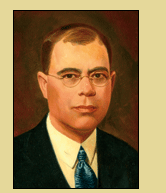 |
| |
Stewart
Roberts,
a prolific writer on a variety of topics, wrote a book
on pellegra, long before it was recognized as a deficiency
disease. Originally on the faculty of AtlantaSchool
of Medicine, he was later a leader at Emory, and his
son later served on the faculty. Roberts eventually
served as president of the American Health Association
and the Southern Medical Associatrion, and he was active
in medical alumni affairs. |
|
| |
|
|
 |
| |
The
Flexner Report, combined with pressure from the American
Medical Association and Association of American Medical
Colleges, convinced the Atlanta College of Physicians
and Surgeons and Atlanta School of Medicine to consolidate.
They reprised the original name from 1854 of Atlanta
Medical College. W.S. Elkin was dean and would continue
in this role for 10 more years after the college transferred
its holdings to Emory University in 1915. |
|
| |
|
|
 |
| |
The
Real Thing: Coca-Cola founder Asa
Candler donated land and $1 million to establish
Emory University in Atlanta. Accordingly, its forebear
school, Emory College, was moved to Atlanta from Oxford,
Georgia. Emory University School of Medicine was formed
this same year when Atlanta Medical College transferred
its holdings to the university, which pledged $250,000
to endow the medical school. |
|
| |
|
|

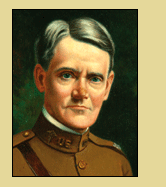 |
| |
When
the United States entered WWI, Lt.
Col. Edward C. Davis, who had originally been
on the faculty of Atlanta School of Medicine, conceived
of and organized the Emory Unit, known as Base Hospital
43, composed mainly of medical school faculty and medical
alumni.
Cyrus Strickler Sr. served
as chief of medicine in the unit, specializing in treatment
of victims of war gas. He devoted much of his career
to Emory without payment.
This same year, the Scott and Fishburne labs (anatomy
and physiology buildings) opened on Emory’s campus,
and the medical school moved its first- and second-
year students from Grady to Emory. |
|
| |
|
|

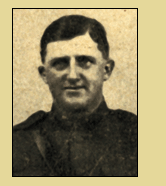 |
| |
Frank
Boland,
who had originally been on the faculty of Atlanta School
of Medicine and who had been a member of the Emory Unit
in WWI, was chosen as the first president of Emory’s
Medical Alumni Association.
This same year, Emory physicians were given charge over
Grady’s hospital for African-American patients,
located in the medical school building across the street
from Grady. |
|
| |
|
|
 |
| |
Wesley
Memorial Hospital
was dedicated on its new Emory campus site and changed
its name to Emory University Hospital in 1932. |
|
| |
|
|
 |
| |
F.
Phinizy Calhoun Sr gave the medical school $10,000 to
establish a medical library named for his father A.W.
Calhoun, who had served on the faculty of Atlanta Medical
College. |
|
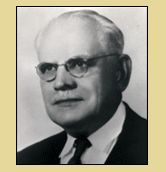 |
| |
This
same year, Homer “Butch”
Blincoe began a 21-year “reign of terror”
as chair of anatomy. His intolerance of lack of masatery
of his subject was legendary among the students. One
former student said that when he was in a foxhole during
WWII, he took comfort in the fact that at least it wasn’t
Blincoe’s anatomy class. |
|
 |
| |
Russell
Oppenheimer became dean and served till 1945. He was
referred to as the “one-man medical school”
because he had so many administrative roles (dean, professor,
administrative chair of Department of Medicine, superintendent
and medical director of Emory Hospital.) |
|
| |
|
|
| |
Timeline
continued on A Marriage Made in Atlanta |
|
| |
|
|
|
|
 |
 |
A
century and a half has passed since Emory School of Medicine
came into being. That period has seen a civil war divide a
nation and two world wars shatter the globe. It has borne
witness to the eradication of smallpox and the discovery of
antibiotics. Along with miraculous advances in science and
technology, those years have ushered in new diseases that
call for further advances to push forward the medical fontier.
At its sesquicentennial, Emory School of Medicine has emerged
from its beginnings as a amall, struggling program to a place
as one of the top medical centers in the country. This timeline
marks the events, people and milestones that for 150 years
have shaped Emory’s growth. It celebrates momentous
strides in heart and eye disease, Parkinson’s/movement
disorders,sickles cell, stroke, infectious disease, transplantations,
diabetes, and bioengineering. It commemorates faculty who
have trained thousands of doctors, who in turn have treated
hundreds of thousands of patients. It shows that 150 years
is not so lond a time after all. Time flies when you’re
having fun. |
 |
| |
|
|
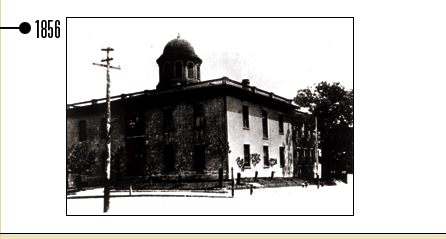
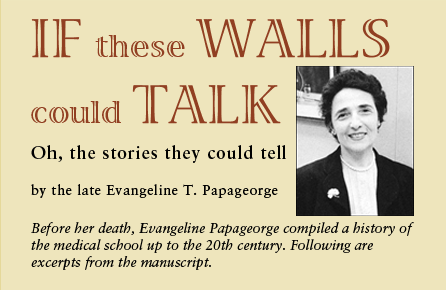 |
 |
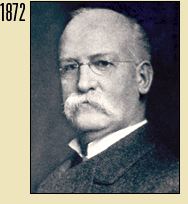 THE
PRACTICE OF MEDICINE IN THE FIRST PART OF THE 19TH CENTURY
in the United States was called heroic because of the
heroic measures usually prescribed. These were based on three
principles: bloodletting, blisters, and purgation. Such practices
led to frequent resort to quacks and self-remedies and resulted
in the development of various “schools” reflecting
the fads and teh fancies of that day. Standards in medical
education were equally deplorable. Selection of faculties
was casual. Requirements for admission were minimal, and those
for graduation varied considerably from school to school.
By the middle of the century, the general pattern was to require
attendance at short sessions of lectures and three years of
reading with a practictioner. Indeed, many physicians practiced
without any formal training other than an apprenticeship.
In all but a few states, proper legislation providing for
dissection was lacking, leading to widespread gave robbery.
Another serious problem was lack of adequate facilities for
clinical instruction, and even when such were available, attendance
was haphazard. THE
PRACTICE OF MEDICINE IN THE FIRST PART OF THE 19TH CENTURY
in the United States was called heroic because of the
heroic measures usually prescribed. These were based on three
principles: bloodletting, blisters, and purgation. Such practices
led to frequent resort to quacks and self-remedies and resulted
in the development of various “schools” reflecting
the fads and teh fancies of that day. Standards in medical
education were equally deplorable. Selection of faculties
was casual. Requirements for admission were minimal, and those
for graduation varied considerably from school to school.
By the middle of the century, the general pattern was to require
attendance at short sessions of lectures and three years of
reading with a practictioner. Indeed, many physicians practiced
without any formal training other than an apprenticeship.
In all but a few states, proper legislation providing for
dissection was lacking, leading to widespread gave robbery.
Another serious problem was lack of adequate facilities for
clinical instruction, and even when such were available, attendance
was haphazard. |
 |
| |
|
|

|
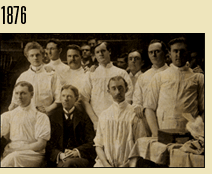 
On
the approval of a charter for Atlanta Medical College by the
Georgia legistlature on February 14, 1854, a group of Atlanta
physicians joined together to launch the school. One of the
first tasks was to petition the city council for use of a
city and country building then under contsrtuction for a planned
fourmonth teaching session. Another job was to advertise for
professors to fill eight chairs. On June 15, 1854, the Board
of Trustees of Atlanta Medical College met to select the men
for these positions.
|
 |
| |
The
first faculty meeting was held on January 31, 1855, to prepare
for the first session, which opened in May. Classes were held
in the new city-county hall, located where the Georgia State
Capitol now stands. Dean John Westmoreland, who had moved
to Atlanta in 1853, signed the minutes of that first faculty
meeting, in which he requested “to solicit subsciptions
for building and furnishing College Edifice.” Willis
Westmoreland, John’s younger brother and a surgery professor,
and J.E. DuBose, the physiology professor, were given the
task to obtain “a house for dissecting.”
The opening of the school was
attended by a considerable struggle. The first issue of the
Atlanta Medical and Surgical Journal—founded
by the Westmorelands-stated that the institution opened under
the most unfavorable circumstances. The financial situation
was bad—the worst, in fact, since 1838. The distribution
of announcements was delayed until less than four months before
the opening of the session. Various reports “derogatory
to our interest” circulated, no doubt fueled by jealousy
on the part of those interested in other medical schools in
the state. At that time, at least three other medical colleges
operated in the state, and as in other parts of the nation,
there was keen competition for students and tuition fees.
|
 |
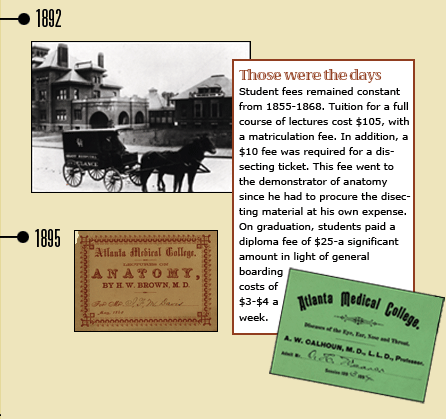 |
| |
Still, the administration
of the Atlanta Medical College prevailed against the odds.
In that first year, the school included eight departments:
anatomy, medicine, surgery, obstetrics and diseases of women
and children, physiology, surgical and pathological anatomy,chemistry,
and materia medica. John Westmoreland was not only dean and
treasurer but also professor of materia medica and therapeutics,
a capacity in which he served until his retirement from the
college in 1881.
By June 21, 1854, the cornerstone
for a new college building was laid at the corner of Butler
and Armstrong Streets. To relieve the college of the debt
of the $15,000 incurred for construction, the dean ran for
election to the state legislature and served as representative
from Fulton County in 1857–1858. He eventually succeeded
in sponsoring legislation to appropriate $15,000 to Atlanta
Medical College, and in this way, he paid the pressing debt.
In return, the school agreed to educate without charge, one
student from each congressional district in Georgia.
The end of the first course
of lectures was completed on August 27,1855, followed by three
days of examination. Commencement exercises followed on September
1. Of the 78 students enrolled for that year, 32 were graduated,
including one from Alabama, one from Tennessee, and all others
from Georgia. Admission to examinations for the degree required
the candidate to be 21 years of age and of good moral character. |
 |
 |
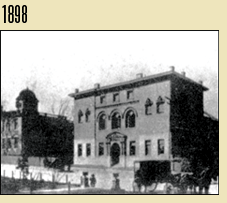 In
1858, the college took steps toward improving what was minimal
clinical instruction: one medical and one surgical clinic
were scheduled each week throughout the teaching session,
in addition to lectures by faculty in these departments. The
school also announced a preparatory or winter course to better
prepare students for the regular summer session. The fee of
$50 for the winter session was to be deducted from the fees
of the regular course. In 1858 a further effort was made towards
improvement of practical instruction when the two Westmoreland
brothers were asked to “report a suitable place for
a teaching hospital.” By 1860 the number of clinics
for students was increased to three surgical and three medical
each week, in addition to experience in the dispensary. Students
representing 10 states attended the sixth series of lectures
that summer. In
1858, the college took steps toward improving what was minimal
clinical instruction: one medical and one surgical clinic
were scheduled each week throughout the teaching session,
in addition to lectures by faculty in these departments. The
school also announced a preparatory or winter course to better
prepare students for the regular summer session. The fee of
$50 for the winter session was to be deducted from the fees
of the regular course. In 1858 a further effort was made towards
improvement of practical instruction when the two Westmoreland
brothers were asked to “report a suitable place for
a teaching hospital.” By 1860 the number of clinics
for students was increased to three surgical and three medical
each week, in addition to experience in the dispensary. Students
representing 10 states attended the sixth series of lectures
that summer. |
|
| |
|
|
 |

Georgia
seceded from the Union in January 1861. That year, classes
at Atlanta Medical College started as scheduled on May 6,
but the session was cut short and the school closed on July
23. The faculty minutes from August 6, 1861, ended abruptly,
mid-sentence.
Not until the fall of 1865
would classes resume. During the war, the faculty scattered.
The college building served as a hospital, and only the clever
ruse of Dr. D’Alvigny saved it from being burned as
General Sherman had ordered.
The story unfolds like this.
The Federal officer in charge had given orders to remove the
wounded from the hospital in preparation for its destruction.
On the eve of the scheduled burning, D’Alvigny formed
a plan. He plied the hospital attendants with whiskey, placed
them in an upstairs room, and instructed them on how to act.
Then he approached the Union officer in charge, complaining
bitterly that wounded men were to be burned without being
given a chance for escape. The Union officer denied the charge,
of course, but D’Alvigny led him to the upper room where
men were groaning in great distress and begging for help.
The officer gave D’Alvigny until daylight to have the
men removed. By that time, however, the Union army had begun
its march to the sea, and the building of the Atlanta Medical
College was saved. |
 |
 |
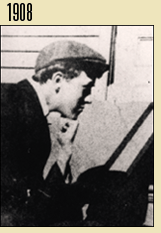 Peace
came officially in April 1865, and fighting in Georgia ceased
by May. While the need for doctors was great, few among the
poverty-stricken students could afford to spend time in medical
school. Late in the year, smallpox struck the city, reaching
epidemic proportions by January of 1866. Soon cholera, which
was sweeping the nation, added to Atlanta’s woes, and
to make matters worse, the winter of 1865 to 1866 was unusually
severe. By the summer of 1865 the faculty of Atlanta’s
medical school had met to discuss reopening the school, and
they agreed to treat the indigent sick free of charge. However,
the city council refused their offer because the poor feared
the professors wanted their bodies for dissection. Peace
came officially in April 1865, and fighting in Georgia ceased
by May. While the need for doctors was great, few among the
poverty-stricken students could afford to spend time in medical
school. Late in the year, smallpox struck the city, reaching
epidemic proportions by January of 1866. Soon cholera, which
was sweeping the nation, added to Atlanta’s woes, and
to make matters worse, the winter of 1865 to 1866 was unusually
severe. By the summer of 1865 the faculty of Atlanta’s
medical school had met to discuss reopening the school, and
they agreed to treat the indigent sick free of charge. However,
the city council refused their offer because the poor feared
the professors wanted their bodies for dissection.
In the fall of 1865, military
authorities returned half of the school building to the medical
faculty. The structure was somehow fitted up for the special
session, which opened on November 6 with 40 students in attendance. |
 |
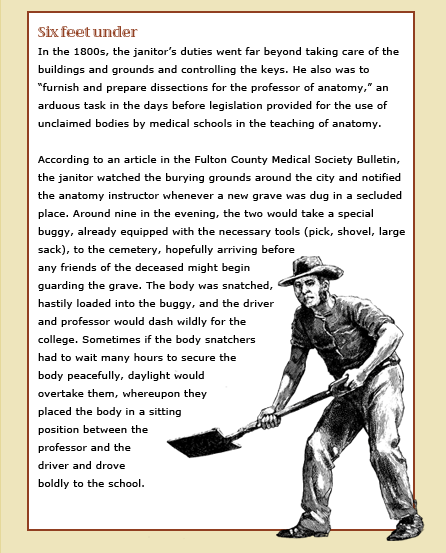 |
 |

Soon
after he was hired in 1857 as professor of obstetrics, Thomas
S. Powell sought to change certain business practices of the
college. Westmoreland, who handled financial affairs, did
not take well to such efforts from a man who had just joined
the faculty. In 1858 the Dean and the majority of the faculty
sponsored an amendment to the charter which gave unlimited
powers to the faculty and curtailed the power of the trustees.
Eight years later, when Powell’s connection with the
college was severed against his will, this amendment led to
a serious conflict, resulting in what historian Henry Bullock
calls the college’s “first dissension-born child.”
In March of 1866, through the
efforts of Powell, the city council donated $5,000 in bonds
to Atlanta Medical College for use in repairing and refurnishing.
Without delay, Dean Westmoreland saw to repairs. He then distributed
the balance of funds among various departments at a special
faculty meeting at which Powell, for reasons not explained,
was absent. A few days later, Powell objected, arguing that
he was to receive sufficient amounts to purchase instruments
for treating charity patients.
He also criticized Westmoreland’s
report of expenditures. Arguments continued in subsequent
faculty meetings and grew to serious proportions. Most of
the faculty supported the dean, whereupon Powell took his
grievances to the Board of Trustees. The faculty resolved
to request Powell’s resignation on August 31, 1866.
|
 |
| |
 |
 |
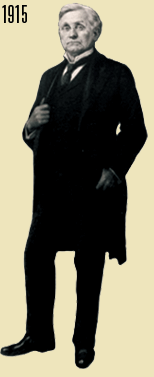 Relations
between Atlanta Medical College and its board became strained,
although four of the 10-member board sided with the faculty.
The “want of harmony” with the faculty grew and
reached the courts. The issue became an 1858 amendment to
the charter, and all the trustees were now aware of the implications
in giving the faculty power to hire and fire colleagues. Faculty
countered efforts to repeal the amend-ment in a letter to
both houses of the state legislature in 1866. The dissident
trustees sought an injunction to prevent the college from
continuing to exercise the authority granted to the faculty
by the 1858 act. The back-and-forth actions continued. Politicians,
the state medical association, even the press got involved.
It wasn’t until the end of 1871 that the controversy
was resolved. Relations
between Atlanta Medical College and its board became strained,
although four of the 10-member board sided with the faculty.
The “want of harmony” with the faculty grew and
reached the courts. The issue became an 1858 amendment to
the charter, and all the trustees were now aware of the implications
in giving the faculty power to hire and fire colleagues. Faculty
countered efforts to repeal the amend-ment in a letter to
both houses of the state legislature in 1866. The dissident
trustees sought an injunction to prevent the college from
continuing to exercise the authority granted to the faculty
by the 1858 act. The back-and-forth actions continued. Politicians,
the state medical association, even the press got involved.
It wasn’t until the end of 1871 that the controversy
was resolved.
Even
then Powell did not rest. He and his friends petitioned for
a charter to open a new medical school in Atlanta, and before
the decade was over, Southern Medical College began classes.
For nearly 20 years the two rivals functioned separately.
As the 19th century neared its end, the two consolidated as
Atlanta College of Physicians and Surgeons in 1898. |
|
| |
|
|
| |

Diploma
mill medical schools were flourishing when the American Medical
College Association organized in 1876. The organization, later
called the Association of American Medical Colleges, enlisted
medical schools in the fight for standards and initially pushed
for a required minimum of three years of training. By 1899,
the standards rose to a four-year course of study with a corresponding
increase in standards of medical licensure at the state level.
Reforms at the Atlanta Medical
College were keeping pace with the national movement. Through
the 1870s, the deans and faculty of the Atlanta Medical College
sought to improve clinical teaching. |
|
 |
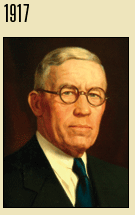 The
lack of an adequate teaching hospital remained a serious problem.
In his report to the trustees for the 1875–1876 session,
Valentine Taliaferro referred to the limited hospital accommodations
in the clinic, which was operated at faculty expense and where
the poor of the city were treated for free. Soon proposals
were floated to treat all charity patients in the city for
50 cents a day in the building provided by the college, but
what the city really needed was a hospital. The
lack of an adequate teaching hospital remained a serious problem.
In his report to the trustees for the 1875–1876 session,
Valentine Taliaferro referred to the limited hospital accommodations
in the clinic, which was operated at faculty expense and where
the poor of the city were treated for free. Soon proposals
were floated to treat all charity patients in the city for
50 cents a day in the building provided by the college, but
what the city really needed was a hospital.
Faculty income still depended
largely on individual practice. The school sometimes had to
borrow to meet expenses, and prizes for graduating students
came from individual professors. Perhaps this accounted for
the fines levied on faculty who missed meetings.
In 1880, Dean H.V.M. Miller
established the office of proctor at the Atlanta Medical College
“at a salary equal to that of each faculty member.”
In a sense, the proctor served in a role as business manager/registrar/student
dean. One of the school’s most successful proctors was
William Scott Kendrick, who brought the school to “a
sound financial condition” in 1892. Upon the death of
Dean Miller, Kendrick was elected not only as dean but also
as professor of the principles and practice of clinical medicine.
|
|
 |
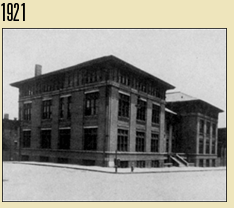 Atlanta
Medical College was represented in the fall of 1892 at a meeting
in Louisville, Kentucky, to form a Southern Medical College
Association with the purpose of upgrading medical education.
The medical school representatives approved two reforms: the
completion of the first year of high school for admission
and a common, three-year curriculum with six months per year
and including dissection and hospital or clinical instruction. Atlanta
Medical College was represented in the fall of 1892 at a meeting
in Louisville, Kentucky, to form a Southern Medical College
Association with the purpose of upgrading medical education.
The medical school representatives approved two reforms: the
completion of the first year of high school for admission
and a common, three-year curriculum with six months per year
and including dissection and hospital or clinical instruction.
The 1895–96 year saw several
events, including implementation of a new curriculum. In September,
the faculty decided that the time had come for installing
a telephone in the college building. The system of each professor
issuing a ticket for admission to his course was abolished.
Henceforth, the proctor was to issue one card to each student
for all courses in a given term. In the following spring,
the matricula-tion and dissection fees were abolished, and
a single charge of $100 per term covered all fees except that
for diploma at the time of graduation.
The old guard among the faculty,
so to speak, were dying and the approach of a new day for
Atlanta Medical College was not far off. |
|
| |
|
|
| |
|
|
| |
|
|
| |
|
|
| |
|
|
| |
|
|
| |
|
|
| |
|
|
| |
|
|
| |
|
|
| |
|
|
| |
|
|
 |
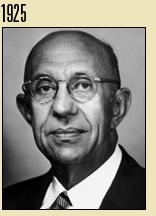 |
|
| |
|
|
|





